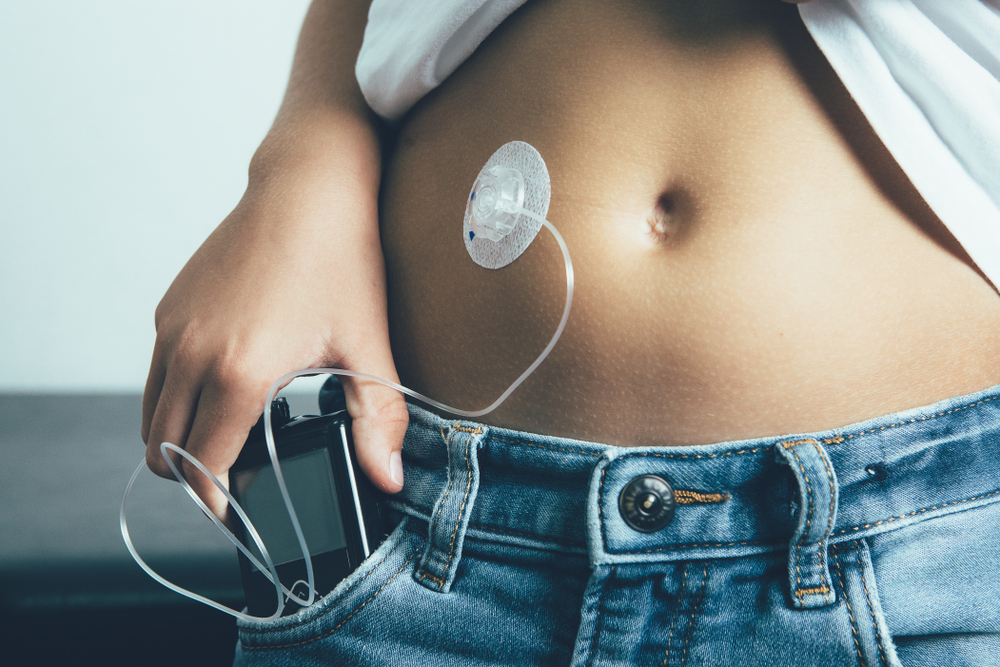Oxford researchers have received funding to set up a UK registry for children and adults who are at risk of type 1 diabetes (T1D), by testing positive for diabetes autoantibodies.

Diabetes autoantibodies are proteins that appear when the insulin-producing beta cells in the pancreas are damaged. They are the most reliable indicator that a person is likely to develop T1D in future.
With a grant of £610,480 from Diabetes UK, the Oxford team will build a database and a website that people can use to join the registry. The registry is unique as it will include individuals identified from clinical care and those from research platforms around the UK. Recruitment to the registry is expected to start later in 2024.
The aims of the registry are to:
- Tell people about new treatments and opportunities to take part in research to prevent T1D, such as testing immunotherapy treatments that could prevent or delay the condition
- Better understand what it’s like being at high risk of T1D and develop resources to support people, to avoid anxiety and worry
- Provide guidance for doctors on how best to care and support people who are at risk
- Collect data on how T1D develops and understand why people progress from being antibody positive and at risk of T1D to needing insulin.
- Understand whether being at risk causes people to attend their GP or A&E more often
The registry will be held at the Diabetes Trials Unit at the University of Oxford. This collaborative initiative will be led by the University of Oxford, co-led by the University of Cambridge and involve researchers from Birmingham, Dundee, Imperial College London, Bristol, Edinburgh, Cardiff, Exeter and the British Heart Foundation.

Dr Rachel Besser (pictured left), a paediatric diabetes consultant at Oxford University Hospitals NHS Foundation Trust and researcher at the University of Oxford’s Centre for Human Genetics, is leading the project. Her work is supported by the National Institute for Health and Care Research (NIHR) Oxford Biomedical Research Centre (BRC).
She explained: “This registry is a first for the UK and brings together children and adults who are at risk of T1D. It is an important step towards a better understanding of the care and support people at high risk of type 1 require, allowing us to offer them a ‘softer landing’ into life with the condition.
Dr Loredana Marcovecchio, academic consultant in paediatric endocrinology and diabetes at the University of Cambridge and co-lead for the project, added: “We’re hoping that it will be easier to tell people about opportunities to take part in research to develop new treatments that might prevent or delay the onset of T1D.”
Dr Lucy Chambers, Head of Research Communications at Diabetes UK, said: “We’re delighted to fund the UK-Islet Antibody registry and hope that it will offer a better future for children and adults identified as being at high risk of developing type 1 diabetes.
“With innovative treatments that can delay or entirely prevent the development of type 1 diabetes on the horizon, the registry will play an important role in readying the UK for the next era of type 1 therapies.”
It is estimated that half the people who have positive autoantibodies are no longer being followed up as they are not involved in research studies. This means there is limited understanding of what it is like to live with being autoantibody positive and what kind of support is needed.
It is hoped that the registry data can be compared with other data routinely collected in the NHS, to better understand if these people use NHS services more than others, perhaps due to anxiety about developing T1D. This data can also be compared with data from other countries.
In addition, more needs to be done to understand the pathway to requiring insulin, and it is hoped the registry will be able to fill these gaps in our knowledge.
Around 400,000 people live with T1D in the UK. This accounts for around eight percent of all cases of diabetes. This includes over 29,000 children and young people. Furthermore, the numbers of new cases of T1D, especially in young children, are increasing by about four per cent every year.